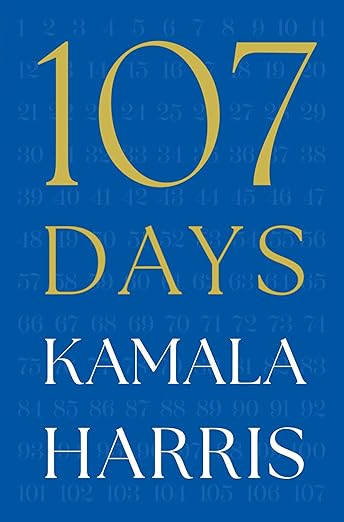Key Concepts and Ideas
Campaign Acceleration and Strategic Pivoting
One of the most striking concepts Harris explores in "107 Days" is the unprecedented nature of running a presidential campaign in such a compressed timeframe. Unlike traditional campaigns that unfold over months or even years of preparation, Harris had to rapidly mobilize resources, messaging, and coalition-building in a matter of weeks. This acceleration required what she describes as "strategic pivoting" - the ability to quickly assess situations, make decisive choices, and adapt messaging to rapidly changing political landscapes.
Harris details how her team had to compress what would normally be a year-long process into just over three months. This included everything from vetting potential running mates to developing comprehensive policy positions across dozens of issue areas. The concept of "campaign acceleration" becomes a metaphor for the broader challenges facing modern democratic institutions, where the pace of information, crisis response, and public opinion formation has dramatically increased.
Throughout the book, Harris emphasizes how this compressed timeline actually became an asset rather than a liability. The urgency created focus, eliminated unnecessary deliberation, and forced her team to prioritize core messages and values. She writes about how the constraint of time paradoxically freed them from overthinking and allowed for more authentic, instinctive responses to events as they unfolded.
"We didn't have the luxury of endless focus groups and polling. We had to trust our instincts and our values, and in many ways, that made us stronger and more authentic than we might have been with more time."
Coalition Building in a Polarized Era
Harris dedicates significant attention to the concept of "expansive coalition building" - the idea that successful political movements must reach beyond traditional bases to include unexpected allies and voices. She describes how the compressed campaign timeline forced her team to think creatively about which groups and individuals could be brought into the fold, often crossing traditional party lines and demographic boundaries.
The book explores how Harris's approach to coalition building differed from conventional political wisdom. Rather than focusing primarily on turning out known supporters, she emphasizes the importance of creating space for people who might be politically homeless or disillusioned with traditional options. This included reaching out to Republican voters uncomfortable with Trump, young voters experiencing their first presidential election, and suburban voters concerned about democratic institutions.
Harris provides specific examples of how this coalition building worked in practice. She describes town halls where former Republicans shared stages with progressive activists, finding common ground on issues like healthcare and economic opportunity. She details conversations with business leaders who had never considered supporting a Democratic candidate but were drawn to her message of stability and competent governance.
The concept extends beyond electoral politics to Harris's vision of governance. She argues that effective leadership in a diverse democracy requires the ability to find shared values and common purpose among groups that might disagree on specific policies. This approach becomes central to her philosophy of democratic leadership.
"A coalition isn't just about adding up votes. It's about creating a shared vision that allows different people to see themselves in the same future, even if they arrive at that vision through different paths."
Resilience and Adaptability Under Pressure
Throughout "107 Days," Harris develops a sophisticated framework for understanding resilience in high-stakes political environments. She distinguishes between personal resilience - the individual capacity to withstand stress and criticism - and institutional resilience, which involves building systems and teams that can adapt to unexpected challenges while maintaining core functions and values.
Harris draws extensively on her background as a prosecutor and attorney general to illustrate how preparation and adaptability work together. She describes how her legal training taught her to prepare thoroughly for known challenges while remaining flexible enough to respond to unexpected developments. This dual approach becomes crucial during the campaign, where each day brought new crises, opportunities, and strategic decisions.
The book provides detailed examples of how this resilience framework operated during critical moments of the campaign. Harris describes late-night strategy sessions where her team had to completely reimagine their approach to a key issue based on breaking news or opponent attacks. She shows how maintaining core values and message discipline allowed for tactical flexibility without losing strategic coherence.
Perhaps most importantly, Harris explores the concept of "collective resilience" - how teams and organizations can become stronger and more adaptable when individual members support each other through challenges. She describes creating what she calls "resilience infrastructure" within her campaign, including regular check-ins with staff, clear communication protocols during crises, and decision-making processes that could function under extreme time pressure.
Democratic Values in Practice
Harris uses the campaign experience to examine how abstract democratic values translate into concrete political practice. She explores concepts like transparency, accountability, and representation not as theoretical ideals but as practical challenges that must be navigated in real-time decision making under intense public scrutiny.
The book details how Harris and her team grappled with balancing transparency with strategic necessity. She describes internal debates about how much of their strategic thinking to share publicly, how to respond to attacks without compromising future flexibility, and how to maintain authenticity while adapting messages for different audiences. These challenges illustrate the complex relationship between democratic ideals and practical politics.
Harris also explores the concept of "representative leadership" - the idea that political leaders must represent not only their direct supporters but also serve the broader public interest. She describes how this principle influenced everything from policy development to staffing decisions, requiring constant attention to ensuring diverse perspectives were included in decision-making processes.
"Democracy isn't just about winning elections. It's about how you conduct yourself in the process of seeking power and how you plan to use that power once you have it. Every decision we made had to reflect the values we wanted to bring to governance."
